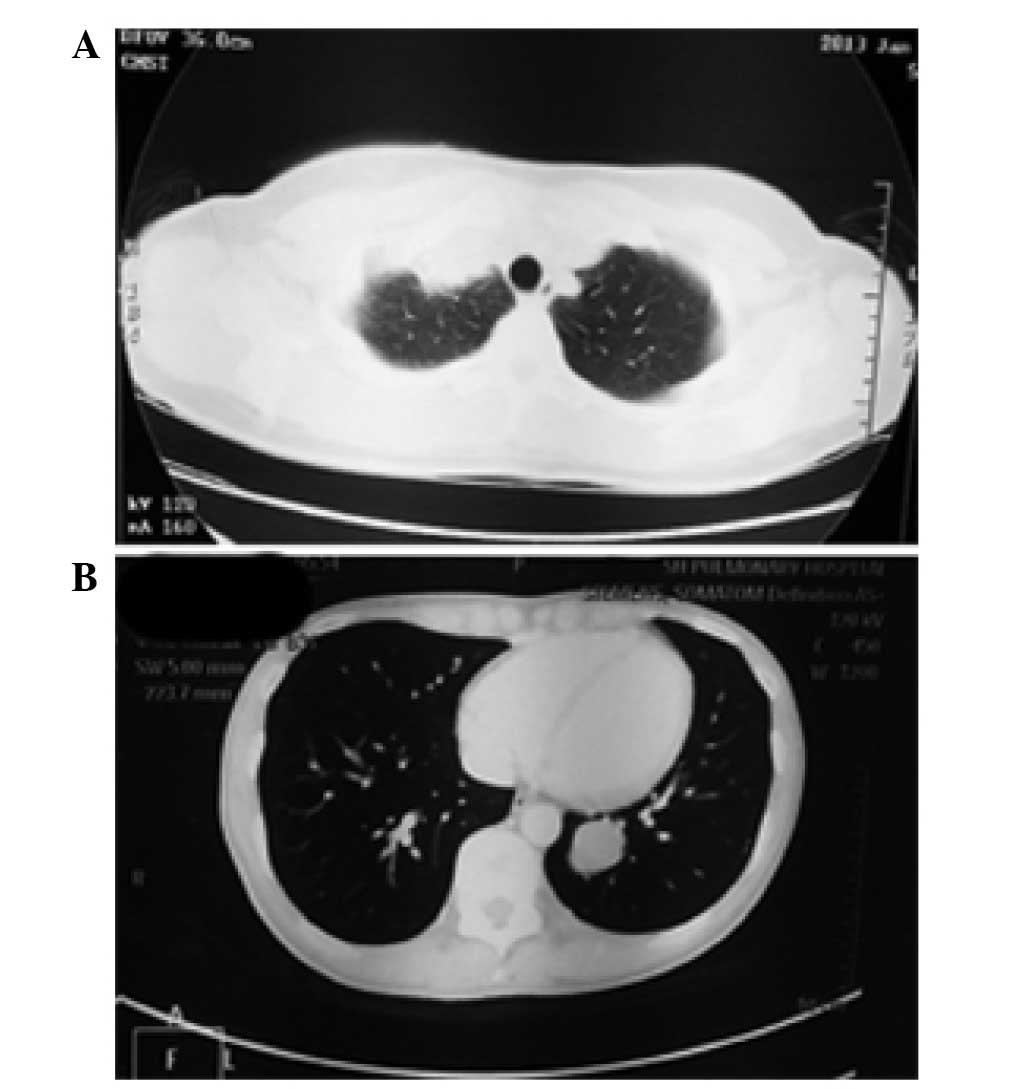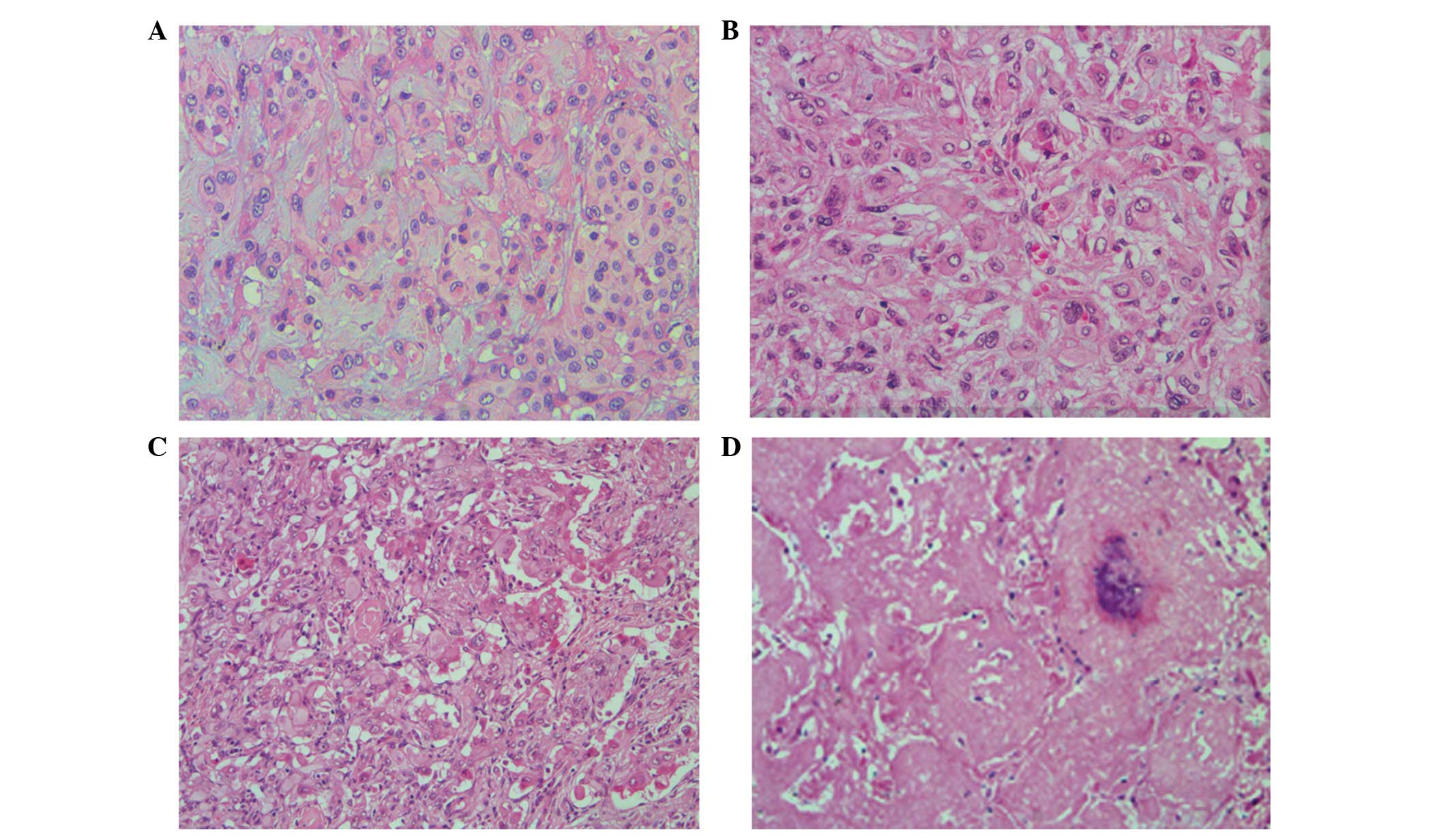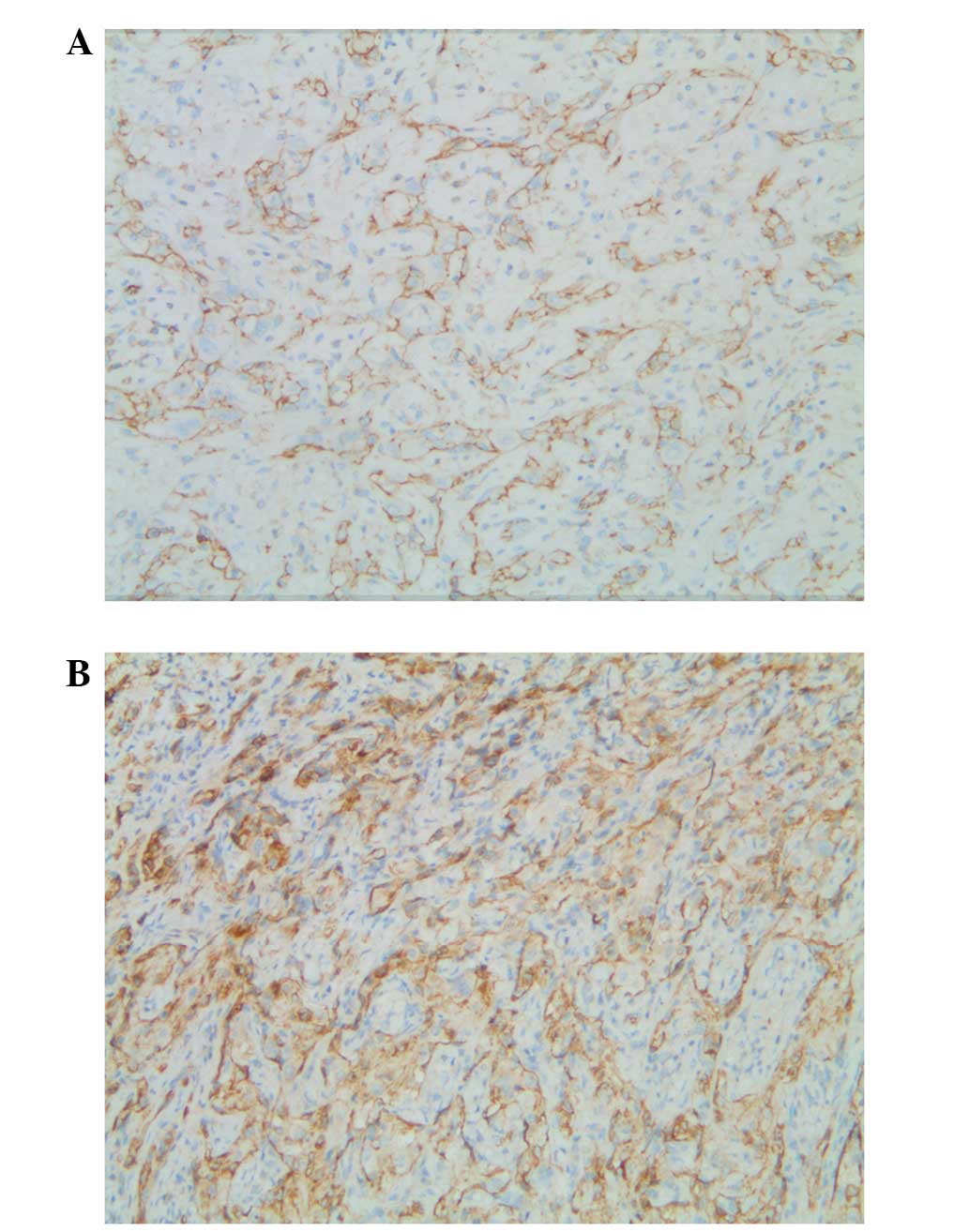|
1
|
Dail DH and Liebow AA: Intravascular
bronchioalveolar tumor. Am J Pathol. 78:6–7. 1975.
|
|
2
|
Anagnostou V, Mossa E, Mihas S, Lepouras A
and Tiniakos DG: Epithelioid haemangioendothelioma of the lung
presenting with pulmonary nocardiosis. In Vivo. 21:1123–1126.
2007.
|
|
3
|
Robinson AA, Tolentino LF, Uyanne J,
Melrose R and Calhoun CC: Malignant epithelioid
hemangioendothelioma of the lip: a case report and comprehensive
literature review. J Oral Maxillofac Surg. 72:695–701. 2014.
|
|
4
|
Leleu O, Lenglet F, Clarot C, Kleinmann P
and Jounieaux V: Pulmonary epithelioid haemangioendothelioma:
reports of three cases and a review of the literature. Rev Mal
Respir. 27:778–783. 2010.
|
|
5
|
Cronin P and Arenberg D: Pulmonary
epithelioid hemangioendothelioma: an unusual case and a review of
the literature. Chest. 125:789–793. 2004.
|
|
6
|
Darbari A, Singh D, Singh PK and Bharadwaj
M: Pulmonary epithelioid hemangioendothelioma: A rare pulmonary
tumor in differential diagnosis of bronchogenic carcinoma. Lung
India. 27:37–38. 2010.
|
|
7
|
Amin RM, Hiroshima K, Kokubo T, et al:
Risk factors and independent predictors of survival in patients
with pulmonary epithelioid haemangioendothelioma. Review of the
literature and a case report. Respirology. 11:818–825. 2006.
|
|
8
|
Weiss SW, Ishak KG, Dail DH, Sweet DE and
Enzinger FM: Epithelioid hemangioendothelioma and related lesions.
Sem Diag Pathol. 3:259–287. 1986.
|
|
9
|
Kitaichi M, Nagai S, Nishimura K, Itoh H,
Asamoto H, Izumi T and Dail DH: Pulmonary epithelioid
haemangioendothelioma in 21 patients, including three with partial
spontaneous regression. Eur Respir J. 12:89–96. 1998.
|
|
10
|
Yang S, Sun R, Zhou Z, Zhou J, Liang J and
Mu H: Expression of Amyloid-β Protein and Amyloid-β Precursor
Protein After Primary Brain-Stem Injury in Rats. Am J Forensic Med
Pathol. Jun 19–2014.(Epub ahead of print).
|
|
11
|
Harb H and Habil I: Frequency and profile
of induced abortions: hospital based study in tertiary hospitals in
Egypt. J Prev Med Hyg. 54:159–162. 2013.
|
|
12
|
Erasmus JJ, McAdams HP and Carraway MS: A
63-year old woman with weight loss and multiple lung nodules.
Chest. 111:236–238. 1997.
|
|
13
|
Dail DH, Liebow AA, Gmelich JT, et al:
Intravascular, bronchiolar, and alveolar tumor of the lung (IVBAT).
An analysis of twenty cases of a peculiar sclerosing endothelial
tumor. Cancer. 51:452–464. 1983.
|
|
14
|
Liao QL, Chen XD, Wang ZC, Wang W and Lai
RQ: Pulmonary epithelioid hemangioendothelioma: a
clinicopathological analysis. Zhonghua Jie He He Hu Xi Za Zhi.
34:187–191. 2011.(In Chinese).
|
|
15
|
Xu JH and Chen LR: Pulmonary epithelioid
hemangioendothelioma accompanied by bilateral multiple calcified
nodules in lung. Diagn Pathol. 6:212011.
|
|
16
|
Rosengarten D, Kramer MR, Amir G, Fuks L
and Berkman N: Pulmonary epithelioid hemangioendothelioma. Isr Med
Assoc J. 13:676–679. 2011.
|
|
17
|
Bahrami A, Allen TC and Cagle PT:
Pulmonary epithelioid hemangioendothelioma mimicking mesothelioma.
Pathol Int. 58:730–734. 2008.
|
|
18
|
Sardaro A, Bardoscia L, Petruzzelli MF,
Nikolaou A, Detti B and Angelelli G: Pulmonary epithelioid
hemangioendothelioma presenting with vertebral metastases: a case
report. J Med Case Rep. 8:2012014.
|
|
19
|
Al-Shraim M, Mahboub B, Neligan PC,
Chamberlain D and Ghazarian D: Primary pleural epithelioid
haemangioendothelioma with metastases to the skin. A case report
and literature review. J Clin Pathol. 58:107–109. 2005.
|
|
20
|
Weissferdt A and Moran CA: Primary
vascular tumors of the lungs: a review. Ann Diagn Pathol.
14:296–308. 2010.
|
|
21
|
Díaz R, Segura A, Calderero V, Cervera I,
Aparicio J, Jordá MV and Pellín L: Central nervous system
metastases of a pulmonary epitheloid haemangioendothelioma. Eur
Respir J. 23:483–486. 2004.
|
|
22
|
Białas M, Papla B and Bulanda A:
Immunohistochemical investigation of selected endothelial markers
in pulmonary epithelioid haemangioendothelioma. Pol J Pathol.
62:236–240. 2011.
|
|
23
|
Traweek ST, Kandalaft PL, Mehta P and
Battifora H: The human hematopoietic progenitor cell antigen (CD34)
in vascular neoplasia. Am J Clin Pathol. 96:25–31. 1991.
|
|
24
|
Molina Palma MI, Cervantes Góngora JA,
García de la Torre E, Conde Pérez de la Blanca I and Ramírez
Tortosa CL: Primary intraoral epithelioid hemangioendothelioma.
Case report and review of the literature. Acta Otorrinolaringol
Esp. 53:215–218. 2002.(In Spanish).
|
|
25
|
Otani K, Ishikawa T, Aizawa Y, Fujise K,
Koyama T, Ohkusa T and Tajiri H: A long-term survival case of liver
epithelioid hemangioendothelioma with multiple lung metastases that
regressed by long-term administration of interleukin-2. Nihon
Shokakibyo Gakkai Zasshi. 109:2097–2102. 2012.
|
|
26
|
Jinghong X and Lirong C: Pulmonary
epithelioid hemangioendothelioma accompanied by bilateral multiple
calcified nodules in lung. Diagn Pathol. 6:212011.(In
Japanese).
|
|
27
|
Reich S, Ringe H, Uhlenberg B, Fischer B
and Varnholt V: Epithelioid hemangioendothelioma of the lung
presenting with pneumonia and heart rhythm disturbances in a
teenage girl. J Pediatr Hematol Oncol. 32:274–276. 2010.
|
|
28
|
Pálföldi R, Radács M, Csada E, Molnár Z,
Pintér S, Tiszlavicz L, Molnár J, Valkusz Z, Somfay A and Gálfi M:
Pulmonary epithelioid haemangioendothelioma studies in vitro and in
vivo: new diagnostic and treatment methods. In Vivo. 27:221–225.
2013.
|
|
29
|
Bagan P, Hassan M, Le Pimpec Barthes F, et
al: Prognostic factors and surgical indications of pulmonary
epithelioid. hemangioendothelioma: a review of the literature. Ann
Thorac Surg. 82:2010–2013. 2006.
|












